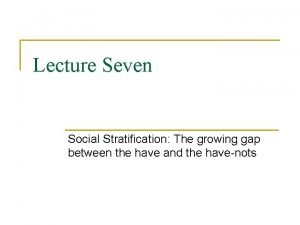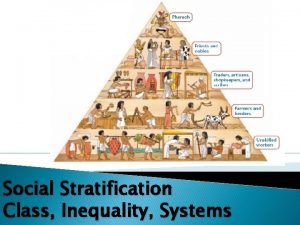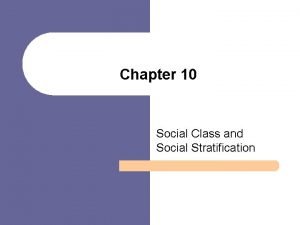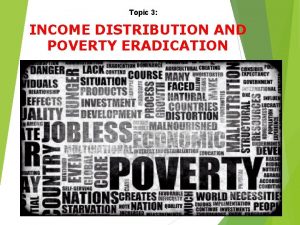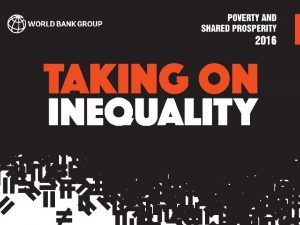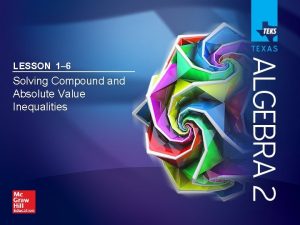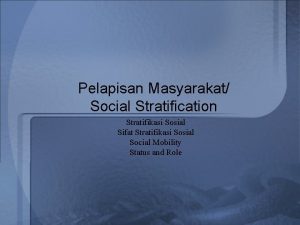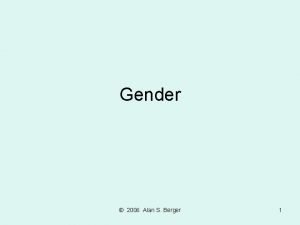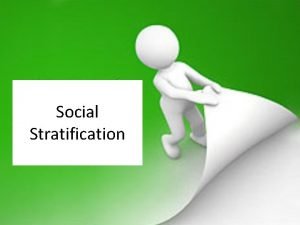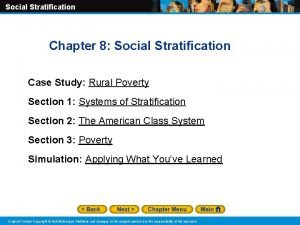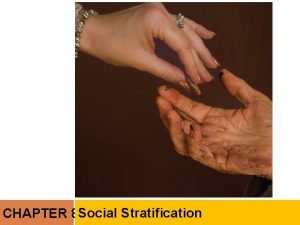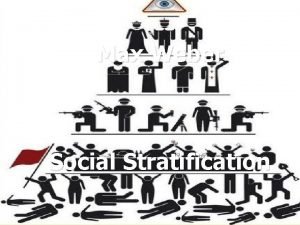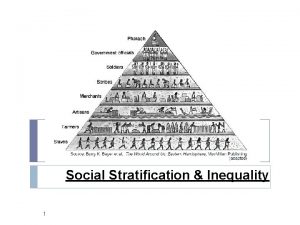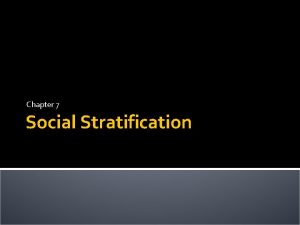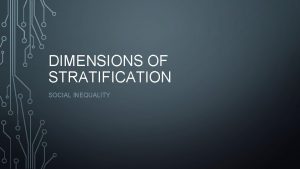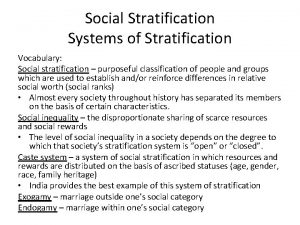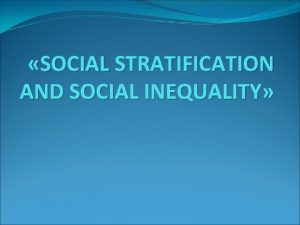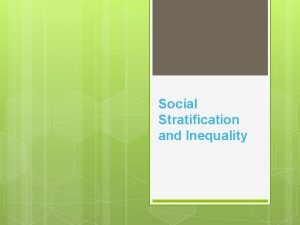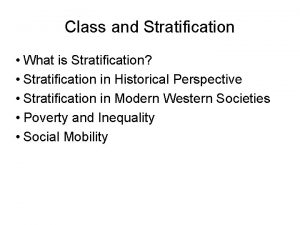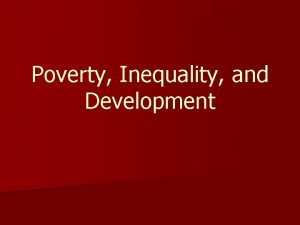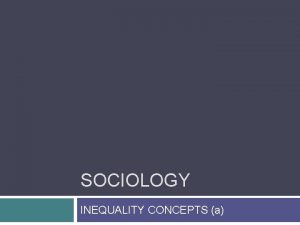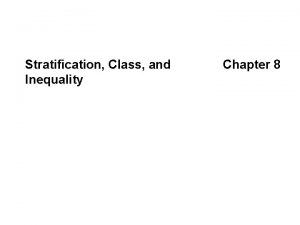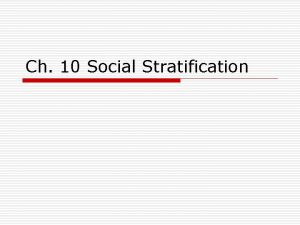Social Stratification Social Classes Inequality Poverty The worst


















- Slides: 18

Social Stratification Social Classes, Inequality, Poverty “The worst form of inequality is to try to make unequal things equal. ” Aristotle

Systems of Stratification • Members of a social class have similar levels of wealth, power, and prestige. • Functionalist Theory: sees stratification as necessary feature • Certain roles must be performed for stability of society • Without varying rewards some jobs would go unfilled • Conflict Theory: see competition over scarce resources as the cause • Stratification comes from class exploitation • A group in power can shape policy to maintain its power • Analyze U. S. society from these two different points of view. Provide specific examples.

Types of Stratification Systems Social stratification is the division of society into categories, ranks, or classes. These divisions lead to social inequality—the unequal sharing of resources and social rewards. Stratification systems lie on a continuum of open to closed systems according to how easy or difficult it is to change statuses. • Closed Systems: difficult to change status • Open Systems: easier to change status Both ascribed and achieved statuses can be used to determine social standing. Do you live in a closed or open social stratification system?

Class Systems • Class system more open than closed stratification system • The fewer ascribed statuses used to determine class, the more open the class system. • The United States has a fairly open system, but the rate of social mobility is not equal for every segment. • Resources and rewards distributed according to achieved statuses (some control over place in society) • Marx divided society into: – Bourgeoisie, or the owners of the means of production – Proletariat, or workers who sell their labor in exchange for wages • Weber described three factors of class: – Property – Prestige – Power – Name your three most important achieved and ascribed statuses. Which of these are most important in your social standing?

The Dimensions of Social Stratification Social class is a grouping of people with similar levels of wealth, power, and prestige. • Wealth – Wealth equals assets—value of everything the person owns—and income—money earned through salaries, investment returns, or other capital gains – In the United States, 1 percent of population controls one-third of wealth What would you do if you won the lottery tomorrow?

• Power – Power is the ability to control the behavior of others, with or without their consent – Can be based on force, a special skill or type of knowledge, particular social status, personal characteristics, or custom and tradition – What are some forms of power that athletes have at different stages of their career? (ex. high school, college, professional) • Prestige – Prestige is the respect, honor, recognition, or courtesy an individual receives – Occupation, education, family background, and area of residence are common factors in the United States. – What factors affect your opinion on athletes? • Socioeconomic status is a rating that combines social factors such as educational level, occupational prestige, and place of residence with the economic factor of income.


Determining Social Class • Three techniques are used to rank individuals. • Which of the following do you think is more accurate in ranking an individual’s social class?

Reputational Method – Individuals in the community are asked to rank other members based on what they know of their characters and lifestyles – Suitable only for small communities – Cannot be used across communities Subjective Method – Individuals are asked to determine their own social rank – Most people choose middle class Objective Method – Income, occupation, and education – Statistical nature makes this method least biased – Choosing different factors brings different results



Class Consciousness • The perception that a class structure exists, along with the feeling of shared identification with others in one’s class. • There are two dimensions to the definition of class consciousness: – the idea that a class structure exists – one’s class identification

Social Mobility • Social mobility is the movement between or within social classes. • Horizontal mobility refers to movement within a social class or stratum. • Vertical mobility refers to the movement between social classes or strata. • There are two kinds of vertical mobility: • intragenerational mobility (within a person’s lifetime) • intergenerational mobility (several generations of one family)

Social Mobility Causes of Upward Mobility Causes of Downward Mobility • Individual effort • Personal factors such as illness, divorce, or retirement • Technological change • Change in merchandising patterns • Increase in population’s general educational level • How do create upward social mobility? • Technological change altering the demand for labor • Overall economic health

Variations in American Poverty Not every American runs the same risk of being poor. Characteristics such as age, sex, and race and ethnicity affect poverty. • Age – As an age group, children have the largest percentage in poverty (20%) • Sex – About 57 percent of the poor are women • Race and Ethnicity – African Americans and Hispanics are more likely than whites to live in poverty

Defining Poverty in the United States • Although the United States is one of the richest countries in the world, about 16 % of its population lives below the poverty line. • Poverty is a standard of living that is below the minimum level considered adequate by society. What one society sees as poverty might be seen as adequate by another society. • Poverty level is the minimum income needed by a family to survive, calculated as the cost of an adequate diet. (2012: $23, 050 for family of four) • Criticism of the method of calculating poverty has led to attempts to find a better definition of poverty. • Why is it difficult to calculate poverty?

Effects of Poverty Poor and wealthy members of society have different life chances and behavior patterns. Life Chances Patterns of Behavior • Life chances define the likelihood that an individual will share in the opportunities and benefits of society. • Divorce rates are higher among low-income families. • Life chances include health, length of life, housing, and education. • Poverty is a disadvantage in health and life expectancy. • Crime rates are higher in poor communities.

Poverty and Sports Homeless World Cup
 Social stratification vs social inequality
Social stratification vs social inequality Social classes in social stratification
Social classes in social stratification Max weber social class
Max weber social class Difference between absolute and relative poverty
Difference between absolute and relative poverty Inequality and poverty
Inequality and poverty Lesson 1-6 solving compound and absolute value inequalities
Lesson 1-6 solving compound and absolute value inequalities Classes e subclasses das palavras
Classes e subclasses das palavras Pre ap classes vs regular classes
Pre ap classes vs regular classes Mixed social stratification
Mixed social stratification Gender stratified
Gender stratified Social stratification slideshare
Social stratification slideshare Social stratification in sociology
Social stratification in sociology Chapter 8 social stratification
Chapter 8 social stratification Dimensions of stratification
Dimensions of stratification Supposedly definition
Supposedly definition Max weber social class
Max weber social class Systems of social stratification
Systems of social stratification Social mobility definition sociology
Social mobility definition sociology Pelapisan sosial
Pelapisan sosial
